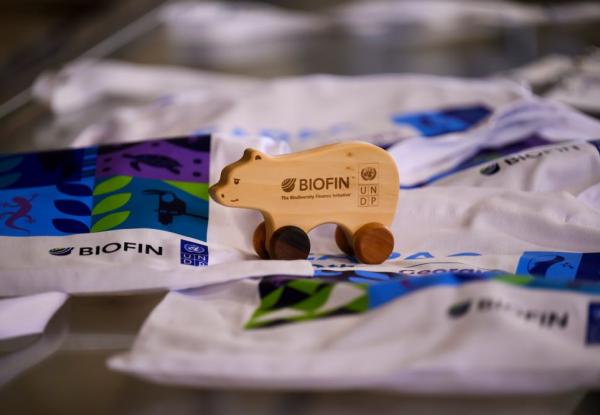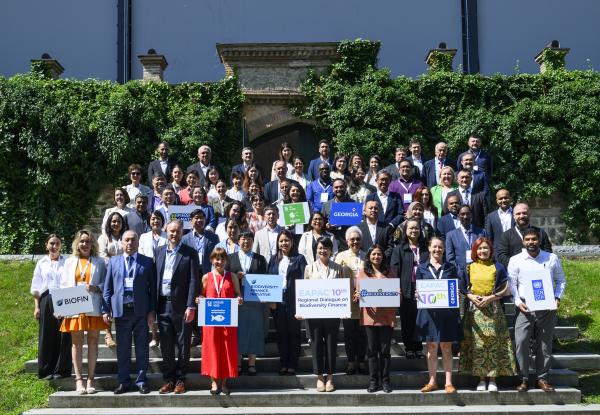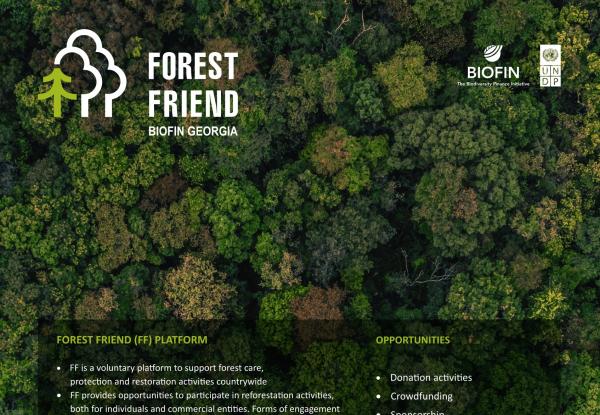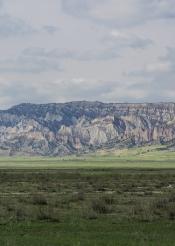Georgia
Georgia is located in one of the biodiversity-rich parts of the world. It is within one of WWF’s “priority places” (the greater Black Sea basin), as well as two biodiversity hotspots (the Caucasus and Iran-Anatolian hotspots) identified by Conservation International. The main biomes found in Georgia are forests (approximately 43% of the country area), freshwater systems and wetlands, marine and coastal habitats, high mountains, semi-deserts and steppes.
Georgian flora is one of the richest among the countries with moderate climates with 4,130 vascular plant species, including around 900 species (approximately 21%) that are either Caucasian or Georgian endemics. 95-98% of Georgian forests have natural origins. The composition, structure, growth, development and other characteristics determine a rich biological diversity – up to 400 tree and shrub species grow in Georgian forests. A large number of endemic timber tree species points to the high diversity of dendroflora. Many local variations of domestic crops, as well as their wild relatives (especially wheats and legumes), are distributed in Georgia. At the same time, 16,054 animal species have been described, 758 of which are chordates. 19 mammals, three birds, 15 reptiles and three amphibians are Caucasian endemics, while the Adjarian lizard (Darevskia mixta) is endemic to Georgia. Protected Areas of Georgia currently cover 11.4% of the country area.
Besides the intrinsic value, the biodiversity of Georgia provides life-sustaining ecosystem services, natural resources and recreational benefits for the population. For instance, the regulating ecosystem services provided by Georgian forests have vital importance for the safety and well-being of the population and different industries, such services are the provision of clean water, mitigation of flood risks, prevention of soil erosion, mitigation of the risks and impacts of landslides, avalanches and mudflows, as well as carbon sequestration. About 2,000 species of Georgian flora have direct economic value, E.g. utilized as timber, firewood, food and animal feed, exported for decorative purposes, plants are also used in medicine, painting and essential oil production. Animal species in Georgia are important for hunting and fishing purposes. Currently, 24 birds and 13 mammals are listed as the hunting species.
- Starting from 2019, the annual state budget allocations for Forest and Biodiversity Department has increased from 100,000 GEL to 400,000 GEL annually. In total, the biodiversity-related annual state budget allocations have been increased by 620,000 GEL (around 240,000 USD).
- The first-ever specific biodiversity-related guidelines for Environmental Impact Assessment (EIA) reports were prepared and an online tool was developed for the application of the checklists during the monitoring and inspection.
- A 5-year eco-tourism development plan was elaborated for the Borjomi Municipality state forest. The plan is being successfully replicated by the National Forestry Agency for larger forest areas of Georgia.
- Donation platform was developed to support fundraising for the Tbilisi Zoo conservation efforts.
- The Fundraising Action Plan for rehabilitation of the 3 endemic endangered species (Tur, Bezoar Goat and Deer) and captive bears was developed.
- The natural resource usage and regulatory fees were defined for the most commercially viable NTFP species. Methodology for calculation usage and regulatory fees was developed.
1. “Improving state budget justification capacity at the Ministry of Environmental Protection and Agriculture (MEPA)”
This solution aimed to develop the capacity at the Ministry of Environmental Protection and Agriculture of Georgia to develop and present well-formulated results-based budgets that meet the requirements of the Ministry of Finance of Georgia and are supported by powerful socio-economic justifications. The solution included technical assistance, capacity development and research facilitation elements at MEPA.
2. “Improving EIA quality, expertise and effectiveness”
This solution aimed to ensure adequate assessment and evaluation of biodiversity into the EIA process to avoid loss of biodiversity and reduce future cost of restoration from planned economic activities. More specifically, to include/enhance biodiversity component into EIA for Hydro Power Plants in accordance to the national legislation, best international practices and country specifics.
3. “Building country capacity for fundraising for priority nature conservation and management objectives”
This solution aimed to build capacity for fundraising for biodiversity conservation that targets individuals through crowdfunding and other web-based tools, private sector through Corporate Social Responsibility (CSR) programs, and donor and international finance institutions (IFIs) through improved communication and fundraising skills in environmental organisations.
4. “Improving ecotourism offerings in state forest areas”
This solution aimed to enhance institutional capacity of the NFA for developing sustainable tourism products, to develop and capture appropriate revenues, and to direct such revenues back towards sustainable forest management. The impact of this solution will be an increase in ecotourism destinations and an increase in sustainable financing for forest ecosystems.
5. “Reviewing and updating existing fees and quota systems for the use of natural resources”
This solution aimed to review and revise the system of fees, quotas, and monitoring of renewable natural resources to establish an effective, equitable and sustainable system for commercial natural resource use. This solution worked in two directions: currently regulated Non-Timber Forest Products (NTFPs) and non-regulated NTFPs. The impact of this solution will be increased resources available for monitoring, increased sustainable revenues for local governments, improved sustainability of natural resource use and the ability to track certificates of origin for natural products.
6. “Measuring and addressing potential adverse impacts on biodiversity from agricultural subsidies”
In the case of Georgia, subsidies, potentially harmful to biodiversity, originate from the state agricultural programs that induce unsustainable behaviour detrimental to biodiversity, typically as unanticipated and unintended side effects of policies designed to achieve socio-economic objectives. This solution aims to: 1) identify biodiversity harmful subsidies in the agriculture sector; 2) reduce subsidies with potential adverse impacts on biodiversity; 3) ensure integration of biodiversity into stimulus and post-Covid recovery measures.
7. “Develop a cost effective and sustainable timber management to increase the National Forestry Agency resources and finance forest conservation”
The National Forestry Agency of Georgia tries to commercialize wood harvesting and selling practices to increase revenue generation in the medium and long term. NFA needs to have a clear vision and practical mechanism/business model to cooperate with the private sector. This solution aims to support NFA in development of long-term vision for formation of the wood market and cost-efficient model for timber sales.
8. “Support post-COVID financial recovery in rural areas of Georgia through sustainably used NTFPs”
The unsustainable harvesting could be accelerated due to COVID-19 pandemic that has negatively affected the income of the rural population overall in Georgia. The current situation provides an opportunity to support sustainable use of NTFPs by increasing the rural population`s awareness on biodiversity conservation and promote sustainable harvesting practices. The aim of the solution is to prevent unsustainable use of NTFPs, avoid future expenses, promote sustainable harvesting, support local communities by introducing new revenue generation opportunities, resulting in biodiversity-friendly financial recovery from COVID-19.
9. “Support the new post 2020 NBSAP, through updating the Finance Needs Assessment and Biodiversity Finance Plan”
This solution aims at the update of finance needs assessment and development of updated FNA and BFP documents, based on the Post-2020 Global Biodiversity Framework (GBF) and relevant National Biodiversity Strategy and Action Plan (NBSAP). The updated FNA and BFP will in the first instance address root causes and main drivers of biodiversity loss focusing on biodiversity mainstreaming, along with communication, capacity building and other activities reducing future expenditures. The documents will also aim at improving resource mobilization from all available sources and using existing resources in an efficient manner.
The Biodiversity Finance Policy and Institutional Review forms a reference point for the whole BIOFIN process. The document establishes a baseline of the national policy and institutional context in which the BIOFIN project is expected to expand biodiversity finance in Georgia.
A Biodiversity Expenditure Review is focused on all types of expenditure contributing to sustainable biodiversity protection and management. Along with the public-sector expenditures, private sector spending and spending by international donor organizations, and NGOs are analyzed. Based on these analyses, there are calculated total expenditure figures, useful to summarize the BD financing trends and status on national level.
The Financial Needs Assessment (FNA) study revealed and calculated the total amount of funding required to sustain and protect biodiversity in Georgia. FNA covered not only NBSAP, but other areas which have a significant effect on biodiversity and ecosystem services.
This Biodiversity Finance Plan (BFP) has been developed to identify and support the implementation of biodiversity finance solutions that together have the potential to significantly improve the management and financing of biodiversity management in Georgia.



